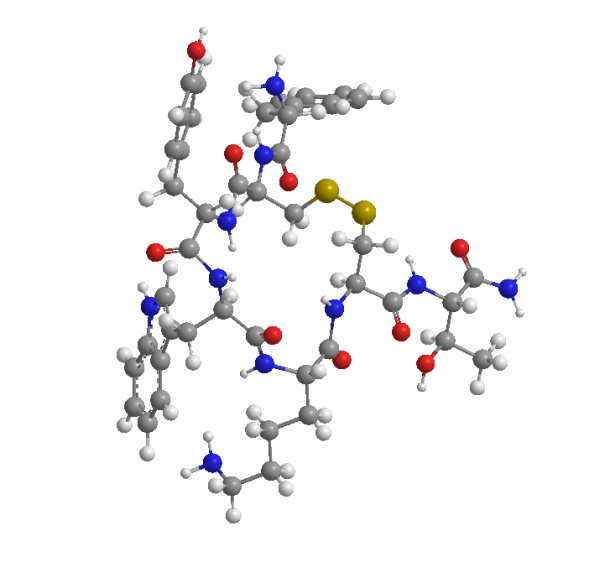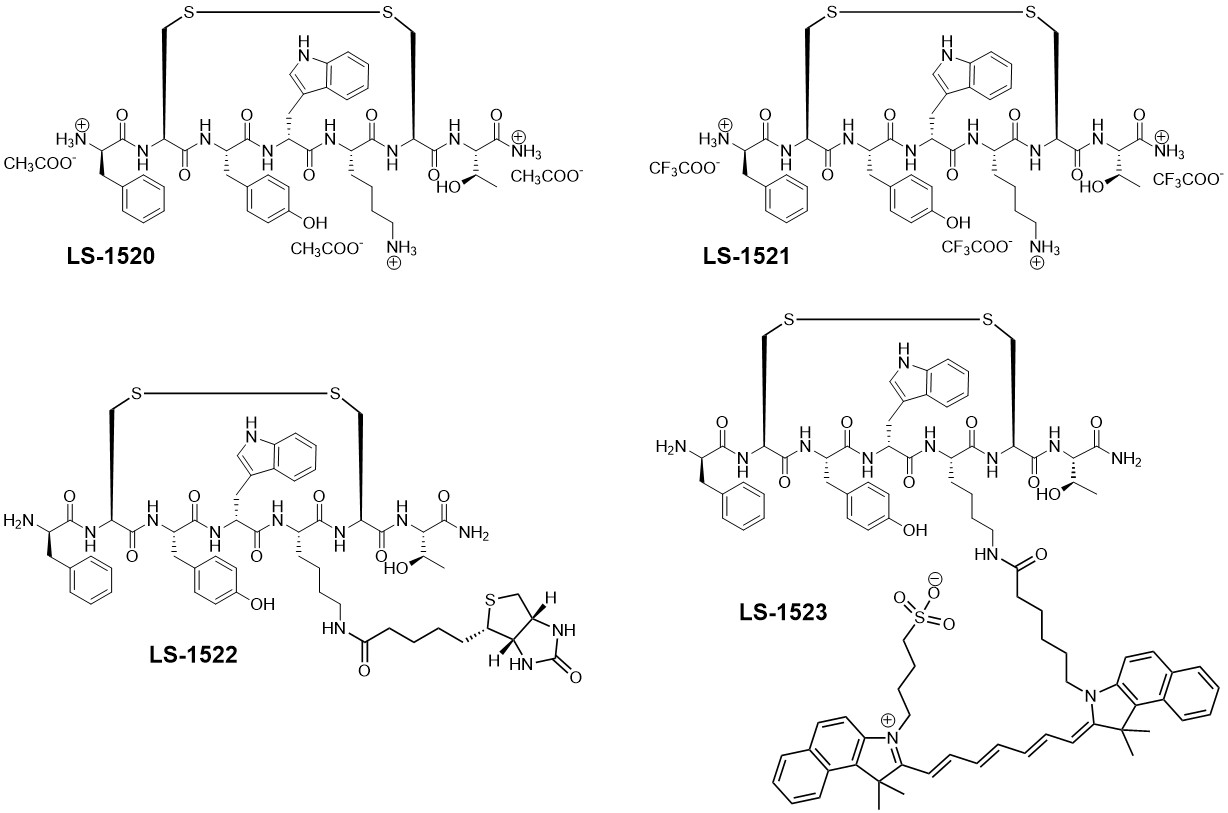Welcome to Iris Biotech
For better service please confirm your country and language we detected.

For better service please confirm your country and language we detected.

Thank you very much for your interest in our products. All prices listed on our website are ex-works, Germany, and may attract customs duties when imported.
You may/will be contacted by the shipping company for additional documentation that may be required by the US Customs for clearance.
We offer you the convenience of buying through a local partner, Peptide Solutions LLC who can import the shipment as well as prepay the customs duties and brokerage on your behalf and provide the convenience of a domestic sale.
Continue to Iris Biotech GmbHSend request to US distributorPublished on 12/08/2020

Somatostatin, a natural tetradecapeptide described as inhibitor of both the growth hormone release and certain endocrine secretions, e.g. gastrin, glucagon, and insulin, shows significant, selective antiproliferative, and anti-inflammatory properties. Somatostatin binds to at least five known Gi/o-protein coupled somatostatin receptors (SSTR 1-5), whose expression patterns vary amongst diverse cell types. Several potent structural somatostatin analogues have been developed and investigated for their antisecretory and antiproliferative properties. Among them, the pentacyclic heptapeptide TT-232 (D-Phe-Cys-Tyr-D-Trp-Lys-Cys-Thr-NH2) shows a significantly different three-dimensional conformation bearing unique characteristics. Its mechanism of action is in line with the so-called signal-transduction therapy, where “internal communication” of cells is corrected without interfering with basic cell functions and machinery. For this analogue, D-amino acids are used at various positions to diminish enzymatic degradation. TT-232 is able to penetrate cells through their plasma membrane, leading to intracellular accumulation. This is a slow process, as opposed to the binding interaction with cell surface somatostatin receptors.

Structures of TT-232 as acetate (LS-1520) and trifluoroacetate salt (LS-1521), as well as of the biotin- and ICG-derivatives (LS-1522 and LS-1523, respectively).
In contrast to somatostatin, which is acting on SST1-5, TT-232 acts on SST4 and primarily SST1. The anti-inflammatory action of TT-232 is mediated through the SSTR4 receptor, and its antitumor activity is mediated through the SSTR1 receptor and by the tumor-specific isoform of pyruvate kinase, leading to an irreversible cell cycle arrest, followed by secondary induction of a programmed cell death (apoptosis). The TT-232-induced inhibition of the growth-promoting tyrosine kinase signal could be coupled to the induction of the regular cell cycle with an apoptotic end. Thus, the compound is shown to have strong antiproliferative and apoptotic effects on tumor cells both in vivo and in vitro without the wide-ranging endocrine side-effects. Iris Biotech provides the tristrifluoroacetate (LS-1521) and triacetate (LS-1520) salt of TT-232 as well as its Biotin- (LS-1522) and ICG- (LS-1523) conjugate. The respective derivatives provide the modification at the lysine residue of TT-232.
Indocyanine green (ICG) is a near-infrared fluorescence imaging dye approved by the FDA and has found numerous applications in therapeutics and diagnostics, e.g. detection of solid tumors, localization of lymph nodes. Its absorption maximum is at 800 nm and there is slight absorption in the visible range, which results in low auto-fluorescence and tissue absorbance. The emission maximum is at 810 nm.
References: